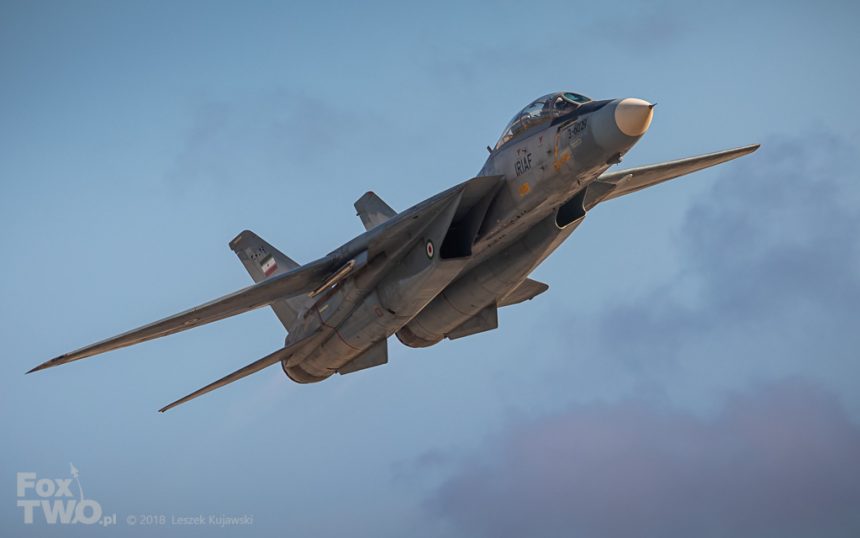F-14 Tomcat and F-4 Phantom Jets Among The Highlights of Iran International Air Show 2018
During the last week of November, Kish island hosted the 9th edition of the Iran International Air Show. More than 100 Iranian and foreign companies showcased their products and technologies during the 4-day event. The booths featured the capabilities of the Iranian industry, showcasing the know-how in the domain of maintaining, modernizing and manufacturing fixed- and rotary-wing aircraft, UAVs (Unmanned Aerial Vehicles), propulsion systems and avionics. Another special section of the exhibition area was devoted to the Iranian space industry.
However, the small, yet packed up air show organized alongside the exhibition was the thing that cannot be overlooked. Even if the industrial portion of the show concerned mostly the civil sector, the dynamic display program was dominated by military jets of the Islamic Republic of Iran Air Force and Islamic Revolutionary Guard Corps and by some foreign guests, including the Russian Air Force’s Strizhi team (flying the MiG-29) and Baltic Bees Jet Team (flying the L-39).
The star of the show was, undoubtedly, the F-14 Tomcat. Iran initially ordered 80 examples, with 79 being delivered beginning in February 1976. According to different sources, Iran has currently around 40 – 42 airframes at its disposal, some of those upgraded to F-14AM (“Modernized”) standard that includes domestic avionics (radar and RWR) and weapons: R-73E, AIM-54A, AIM-7E and AIM-9J. IRIAF has two types of F-14As: PMC (Partially Mission-Capable) ones, usually suitable for Training and can become FMC in case of war; and Fully Mission-Capable Tomcats with fully operable fire control system, armament system and INS. These FMC F-14As are usually used for 24/7 Quick Reaction Alert and other combat missions (Usually 70% of the airworthy Tomcats are FMC). Around 24 aircraft are estimated to be fully ready for combat, with partial readiness maintained for 16 more airframes. These aircraft are based at TFB.8 (Tactical Fighter Base 8) Baba’i near Eshahan, in central Iran.
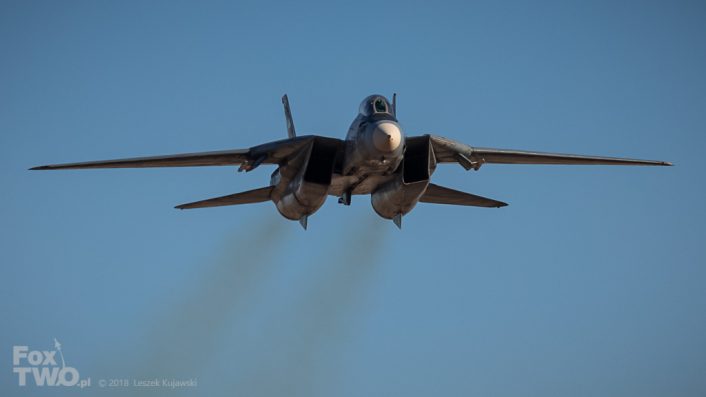
Persian Tomcat aside, other highlights of the show included the Iranian Navy’s (IRIN) SH-3D Sea King helicopter with an attractive naval paint scheme, and PC-7 and EMB-312 combat trainers as well.
A specially designated zone was the place where some of the aircraft involved in dynamic displays were being showcased. There, seven red-blue-white Fulcrums were staying, belonging to the Strizhi team, along with the accompanying Il-76MD, Baltic Bees Jet Team’s L-39 jets, light Harbin Y-12 airlifter, two PC-7s, three Tucanos and two Saeqeh I aircraft. Avid aviation geeks would even notice the An-74 airlifter belonging to the IRGC.
Flying demos took place during all 4 days of the show. They started in the afternoon coming to an end just before the sunset. Each day, the show in the air was being opened by paratroopers with an Iranian flag, jumping out of the Y-12. Then the display area became a target for a demo airstrike conducted by a pair of IRGC’s Su-22M4/Su-22UM3 jets. The pilots made two simulated airstrikes as a pair, just to make extra two passes afterwards, as single ships.
One should recall the fact that the Fitters flew to Iran from Iraq, during the Operation Desert Storm. Around 40 aircraft of the type fled to Iran, seeking shelter from the Coalition airstrikes, back in 1991. After the war the jets were confiscated, becoming a part of the war reparations, with regards to the conflict that took place between 1980 and 1988. They have remained non-operational for several years. In 2013 an overhaul program began, and the Iranian authorities announced that a single Su-22 squadron (10 airframes) had their airworthiness restored. According to the official information, the Iranian Fitters also went through a modernization making it possible to utilize modern armament. The available photographs seem to suggest that some of the Iranian Sukhois have been fitted with an air-to-air refueling system, most probably acquired from the ex-Iraqi Mirage F1s. No details are known, with regards to that matter, as for now. Furthermore, Iranian experts claim that another 10 Fitters have been modernized in July 2018, providing the jet with an ability to carry smart munitions and receive reconnaissance data from the unmanned assets. Similarly to the Phantom, it is expected that the Iranian Sukhois will receive the air-launched-cruise missile capability soon. Interestingly, 10 of the Iranian Su-22 jets were transferred to the Syrian Arab Air Force in March 2015, over the course of the ongoing civil war.
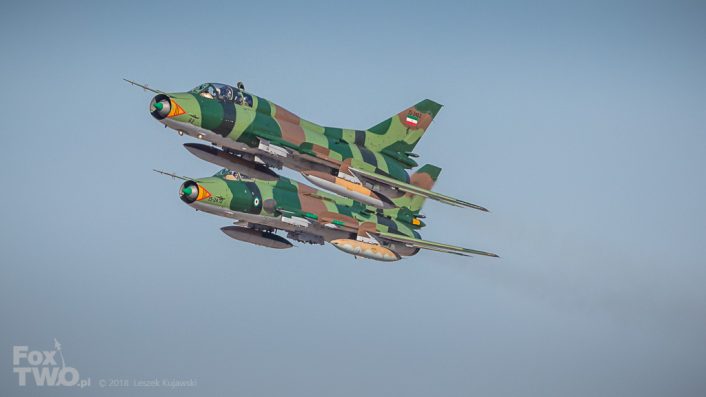
The display of the Fitters was followed by the trainer aircraft. First, a PC-7 solo display, followed by a trio of EMB-312s. Next was a pair of Saeqeh I (Thunder), an Iranian attempt to create a multi-role aircraft on the basis of the F-5E/F tiger. Externally the Iranian Thunder has a double V-fin on its back. Following a spectacular formation take off, the pilots presented a number of spectacular passes, some of them – flying over the audience. Notably, Iran operates 60 modernized F-5 fighters, including 15 twin-seaters, as Global Security reports. When it comes to Saeqeh, it is an Iranian-built single seater, developed by IRIAF and the Iranian MoD. Saeqeh does not really differ from the prerequisite, the F-5E, apart from the vertical stabilizers layout and extra wing-strakes. The intakes have also been redesigned. The rest of the airframe seems to be identical to the F-5. Given that the IRIAF has a major quantity of Northrop F-5s at its disposal, it could be possible that Saeqeh is just a rebuild of the American design.
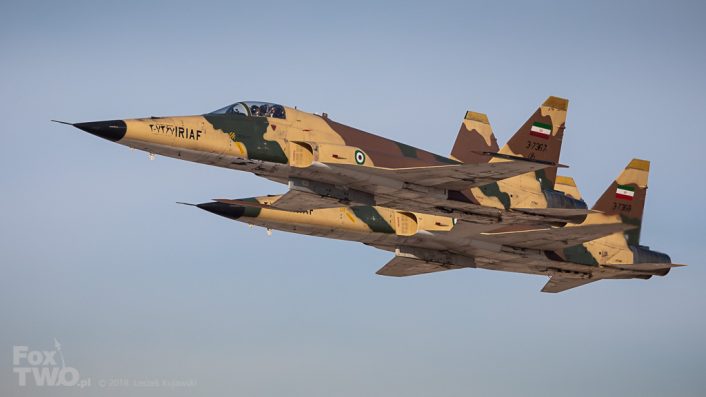
Then it was the time for a long awaited formation: KC-747 accompanied by two F-14 Tomcats and three F-4 Phantoms. After the formation made a majestic flypast, the aircraft broke the formation to return separately a few moments later.
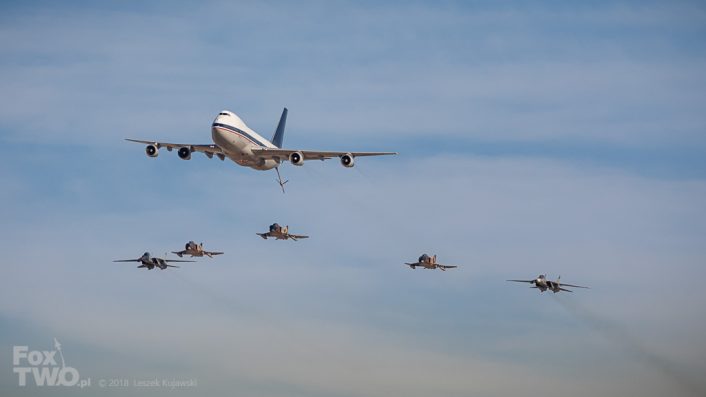
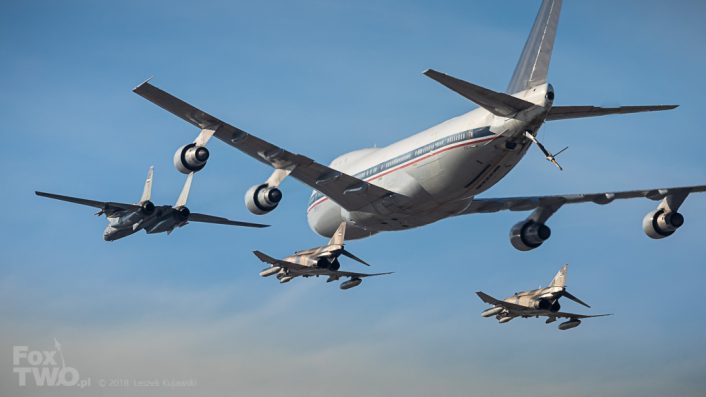
Before that happened, the C-130H executed a tactical cargo drop with the use of parachutes. The fighters returned just a few seconds later. First, three F-4 Phantoms made a tight formation pass and then performed a break, directly in front of the audience. Global Security claims that Iran operates 60 F-4D/E and 4 RF-4E Phantom II jets (50 in the echo variant and 10 in the delta version). The jets are being modernized, receiving a Chinese-made radar. Back in October 2013 we’ve reported that the Iranian Qader cruise missile was being integrated and tested on the F-4.
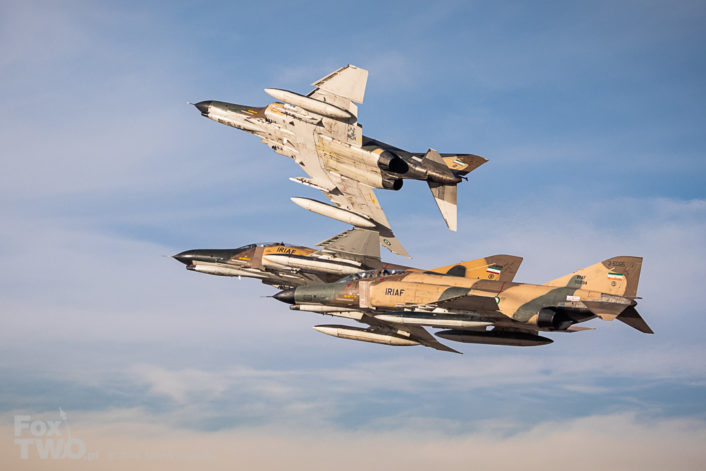
Contrary to all of European or American air shows, the pilots made a turn towards the audience, meaning that the aircraft were making a flypast over the spectators, instead of flying away from them, as it usually happens during the air shows we know. Those who paid attention to detail could have noted that the jets in the air have had their avionics modernized, within the framework of the Project Dowran program. And following the Phantoms, the F-14s appeared in the air, inspiring a round of applause among the audience. Following the Tomcats, two Saeqeh I jets made a low pass over the airfield, ending it in a spectacular break. And this ended the program presented by the hosts. The airspace over the airfield was now handed off to the guests. First, the Baltic Bees showcased their skill, followed by the Strizhis flying the Fulcrums. The show ended on sunset.
The Iranian Kish Air Show was shorter than European air shows, as only 3 hours of displays with a minor number of aircraft could be witnessed, instead of a full 8 hours long flying program. Many persons could also assume that the effort made to reach Iran is incommensurable, especially when one thinks of all the highlights of the show. However, as Przemek Szynkora of the FoxTwo.pl team summarizes, the exotic nature of the show, uniqueness of the aircraft, with a particular emphasis placed on Tomcats and Phantoms, was enough to convince one to visit the show, making it one one of the highlights of the 2018 air show season.
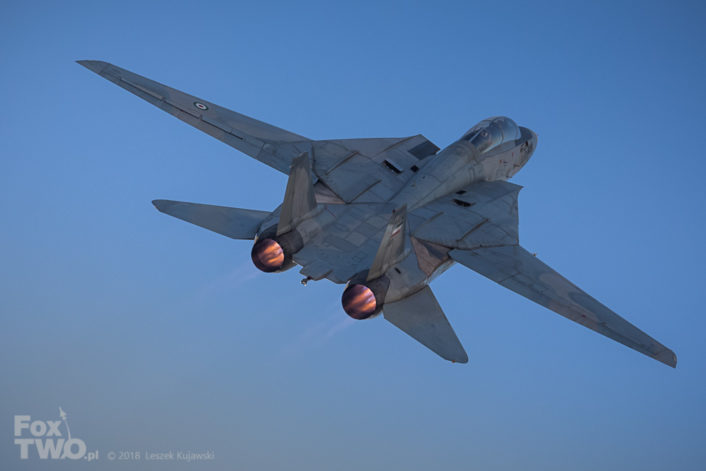
Written with Przemek Szynkora / FoxTwo.pl. All Images: Leszek Kujawski/FoxTwo.pl

